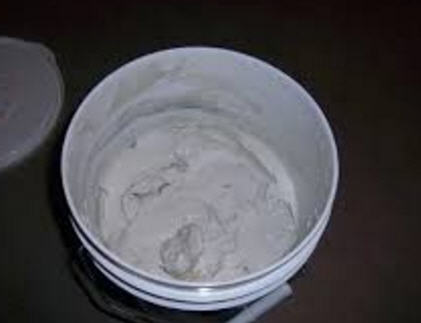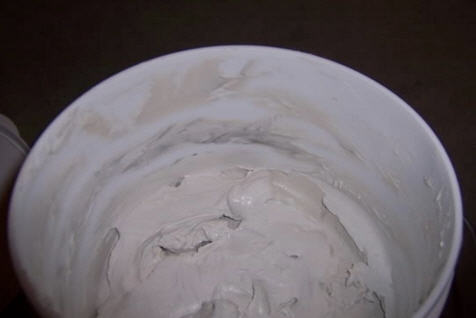The simplest answer to the question, “Does drywall mud go bad?” is Yes.
Drywall joint compound, also known in the trade simply as “drywall mud,” has organic materials in it, and those organic materials can decompose.
Let’s take a look at the material data sheets of joint compound from several manufacturers. The data sheet on Easy-Fil, made by Certainteed, states:
Shelf life: 12 months from production code date when stored properly.
from Certainteed Easy-Fil product data sheet
So, the best you can hope for is a shelf life of 12 months, IF stored properly, which includes cool, dry, and un-opened. Certainteed’s data sheet for ready mixed joint compounds states:
The recommended dates by product group should allow ample time for distribution channels to sell the product and the applicators to apply the product before any deterioration of product quality occurs
from CertainTeed Finishing Product Shelf Life
Please note the above phrase, “before any deterioration of product quality occurs.” Yes, joint compound will deteriorate, and it will do it rather quickly once opened and exposed to air. Certainteed suggests that pre-mixed joint compounds should be used within 9 months (as shown in the table from the above resource.) HOWEVER, 9 months is if the mud has been unopened, and strored in ideal conditions. The drywall mud will deteriorate much, much sooner if opened and stored in less than ideal conditions.
The material data sheet from Continental Building Products regarding ready mix joint compound includes this phrase:
Do not use if material has spoiled and is moldy or has an unpleasant odor.
from Continental Building Products SAFETY DATA SHEET, May 2015
The above data sheet from Continental Building Products covers these brands: Rapid Coat® Lightweight Joint Compound White, Beige, Yellow; Rapid Coat®, Rapid Deco® Level 5TM Joint Compound, white and tinted, Rapid Coat® Midweight, Rapid Coat® Low Dust, Rapid Coat® Lightweight Mold Defense, Rapid Coat® Fullweight, Rapid Coat Pro® Fullweight Lite, Rapid Coat All Purpose Mold Defense®.
Yes, drywall mud will get moldy when it starts to “deteriorate” or decompose. Here is an illustration of a previously-opened bucket of joint compound that had been sitting for a couple of weeks. Notice the top had some dried out mud that had crusted over and made chunks. Also notice on the inside wall of the bucket that there is black mold starting to form:

Moldy drywall mud is not a problem that only occurs to ready mix joint compound made by
Continental Building Products. The material data sheet from U.S. Gypsum which makes the SHEETROCK® Brand All Purpose Joint Compound, states something nearly identical:
Store in a cool, dry, well-ventilated place. Store in a closed container away from incompatible materials. Protect from moisture. Keep away from heat. Do not use if material has spoiled, i.e., there is a moldy appearance or an unpleasant odor
from USG SAFETY DATA SHEET
There is just no getting around the fact that all brands of drywall mud will decompose. When they do, they produce a very foul smell, and you can visually see the presence of black mold. Here is another illustration:

In the above image it is easy to see the black mold forming on the side of the bucket. If this bucket was to be left in a warm moist location for another couple of weeks, the entire top surface of the joint compound would turn nearly all black from the mold.
A well known forum for home improvements and remodeling had a post from a person asking if joint compound goes bad. The person stated that the joint compound smelled “like river mud.” Here is a response from a drywall contracting professional:
from Homerefurbers.com forum
That stuff has an actual shelf life of about 3 months after it is opened. What you are smelling is what is known as an anaerobic(no Oxygen) bacterial growth. This process breaks down the ability of the compound to maintain its holding power.
The bottom line is that gypsum board joint compound (drywall mud) will deteriorate and decompose. Ideal conditions will prolong its shelf life, including storing it in a cool, dry place, and not opening the bucket. Once the bucket of “mud” is opened, the clock starts ticking.
At that point you need to use it, or lose it.